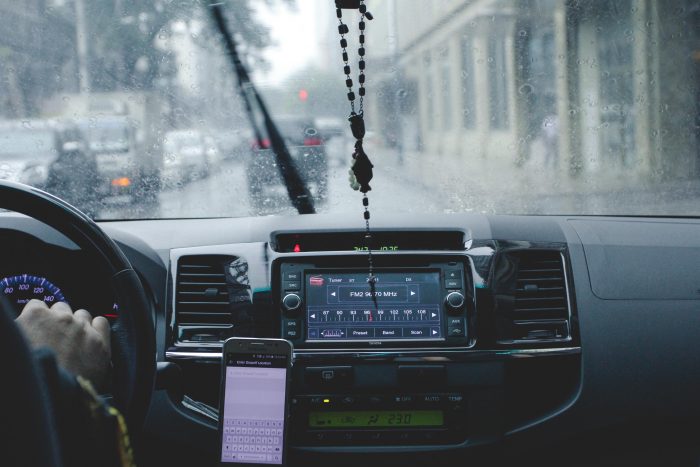
Exceeding the speed limit is against the law—everyone knows that. Most people also know that the fines for speeding can increase depending on the location of the violation; for example, speeding in a work or school zone will double the fines of any traffic ticket. And multiple violations can lead to additional penalties, along with suspensions.
What you may not know, however, is that driving at or even below the speed limit can lead to a speeding ticket. This violation is listed under the New York Vehicle and Traffic Law, VTL, section 1180(a), and states as follows: No person shall drive a vehicle at a speed greater than is reasonable and prudent under the conditions and having regard to the actual and potential hazards then existing.
This statute does not provide guidance as to what qualifies as reasonable and prudent, which conditions are in question, and what is considered an ‘actual and potential hazard.’ Unlike other sections of the Vehicle and Traffic Law – where violations are clear-cut, this section does not clearly delineate what warrants a ticket.
Fines and Penalties for Violating Section 1180(a)
The fines for a first offense are as follows:
- 3 points (read how points affect insurance rates)
- $150 maximum fine
- $93 court fee
- Up to 15 days incarceration
If a second offense is committed within 18 months of the first offense, the fines penalties increase to:
- 3 more points
- $300 maximum fine
- $93 court fee
- Up to 30 days incarceration
For a 3rd offense within 18 months:
- 3 more points
- $525 maximum fine
- $93 court fee
- Up to 30 days incarceration
- Mandatory license suspension
Most auto insurance companies will also raise your insurance premiums for a Speed Not Reasonable and Prudent violation.
Driver Responsibility Assessment
Upon receiving a total of 6 or more points within an 18-month period, a driver is subject to an additional DMV penalty known as a “driver responsibility assessment” or DRA. The fine for a DRA is $300 for 6 points ($100 per year for 3 years), and $75 for each point above 6 ($25 per year for 3 years).
Language of the 1180(a) Statute
A look at the language of the statute, along with case law on the subject, will help understand what conduct this section governs – although what precise action will qualify is often subjective in nature.
“No person shall drive a vehicle at a speed greater than is reasonable and prudent”
This section does not set forth a specific speed. Therefore, the current speed limit of the road is irrelevant. What precisely defines ‘reasonable and prudent’ is a question for litigation.
“Under the conditions and“
The condition of the road must be taken into account. While the majority of people do drive slower in inclement weather, for example, we all are familiar with the driver whom is at the speed limit, but is clearly driving faster than the other cars, and is driving unsafely. This section allows for the ticketing of such a driver.
“Having regard to the actual and potential hazards then existing.”
Drivers are cautioned to be wary of actual – such as ice on the roadways – and potential hazards – such as possible debris on roadways from storms – while driving.
How fast is too fast can really be summed up in two words – drive reasonably. During Super Storm Sandy, for example, driving any speed was unreasonable. Therefore, driving a mere 1 mile per hour can arguably be a violation of this section. A light rain, on the other hand, will allow for a speed closer to the actual speed limit.
Case Law Analysis
In NY v. Kehoe, the Court acknowledged the significant differences between two types of speeding offenses – §1180(a) and §1180(b). Whereas subsection (b) prohibits driving above a certain limit, subsection (a) governs driving irrespective of the posted speed limit, but rather, the conditions of the road.
In Peschieri v Estate of Ballweber (285 AD2d 921 [2001]), a passenger on a motorcycle was killed when the driver of the motorcycle crashed because of a car which had made an illegal turn. The court found that the driver of the motorcycle, Iacobelli, was entitled to judgment as a matter of law because there was “[U]ndisputed evidence that Iacobelli was traveling at the speed limit with no adverse conditions or obstructions requiring a further reduction in speed, and that the Ballweber vehicle’s turn in front of him was sudden and unexpected.
In this ruling, the court had highlighted the importance of factual evidence that proved that the driver was not driving unreasonably. As there was no way to predict any potential dangers, no violation had occurred. Merely causing an accident will not suffice. There must be actual unreasonable driving in order to violate the statute.
Who Should You Call
As we can see from both the language of the statute and the associated cases, whether you are convicted of violating the statute will be dependent on what is to be considered reasonable and prudent based on the road conditions. As this is a subjective question, attorneys are vital to assist in litigating this central question. How fast is too fast does not have a definitive answer. Certain situations warrant a reduced speed. What speed that is, however, will require testimony and the introduction of evidence.
If you have been ticketed for a violation of 1180(a) Speed Not Reasonable and Prudent, the experienced attorneys at Rosenblum Law can help fight your ticket and save you from points, fines, and auto insurance increases. Call us for a free consultation at 888-434-0406.